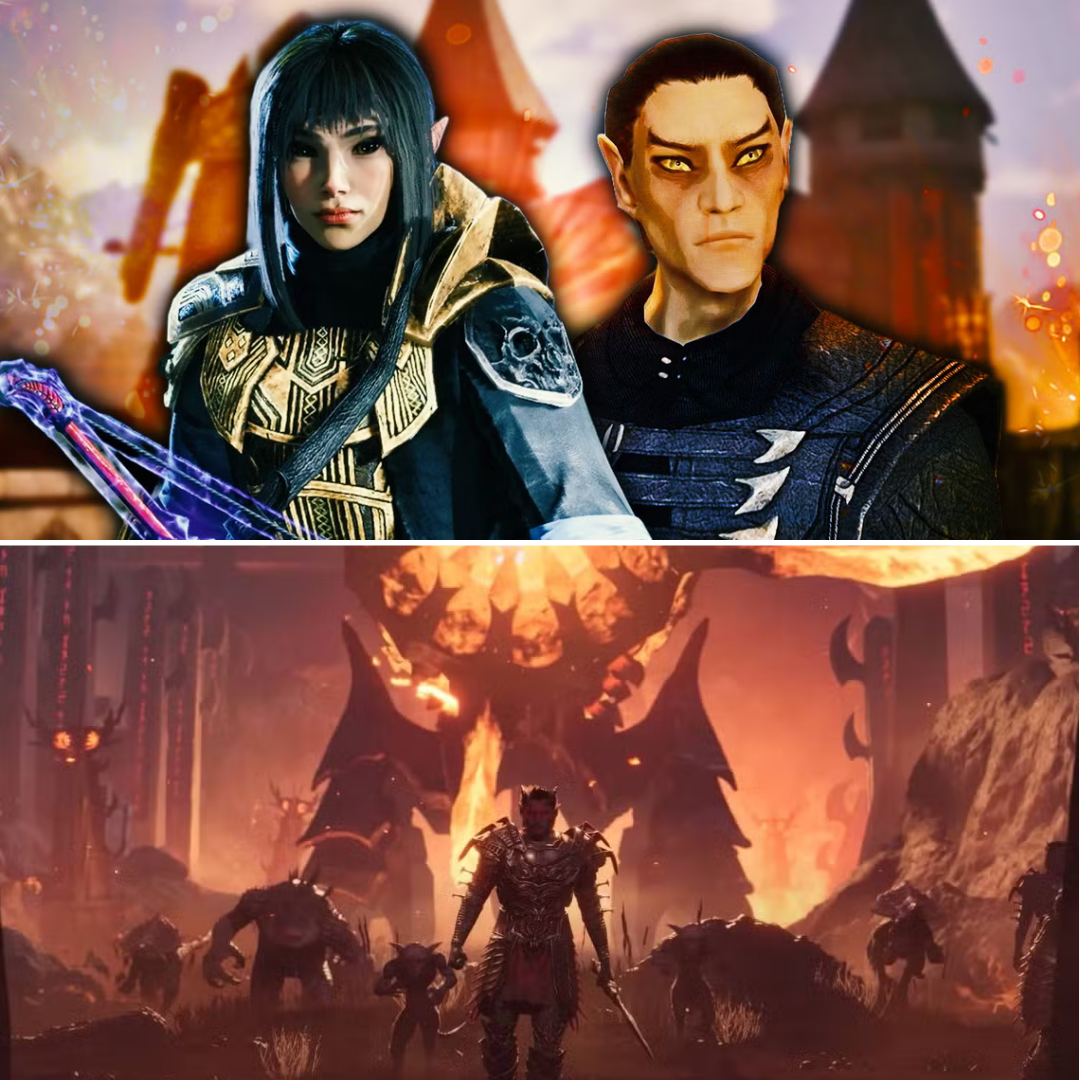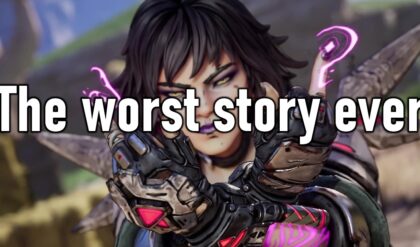Oblivion Remastered’s Ending and the Rise of the Thalmor
The Elder Scrolls IV: Oblivion Remastered, released on April 22, 2025, for PlayStation 5, Xbox Series X/S, and PC, has reignited passion for Bethesda’s classic RPG. Powered by Unreal Engine 5, this remaster of the 2006 title brings Cyrodiil’s sprawling world to life with modern visuals, revamped combat, and a melded leveling system that blends the best of Oblivion and Skyrim. The game’s main story, centered on the Oblivion Crisis, follows the Hero of Kvatch as they thwart Mehrunes Dagon’s invasion and aid Martin Septim in sealing the Daedric gates. Yet, it’s the ending’s ripple effects—revealed through lore and context—that cast a new light on Skyrim’s most reviled faction: the Thalmor, the High Elf-led organization despised by fans for their arrogance and oppressive rule. How does Oblivion Remastered explain the rise of this hated race, and what does it mean for the future of The Elder Scrolls? Let’s explore the crisis, the Altmer’s transformation, and why this connection is sparking heated discussions across gaming communities.

The Oblivion Crisis: A World in Chaos
Oblivion Remastered immerses players in the Third Era’s waning days, where the assassination of Emperor Uriel Septim VII triggers the Oblivion Crisis. Mehrunes Dagon, the Daedric Prince of Destruction, opens portals across Tamriel, unleashing Daedric armies to conquer the mortal plane. The Hero of Kvatch, alongside Martin Septim—the last Septim heir—battles the Mythic Dawn cult, led by the Altmer antagonist Mankar Camoran, to close these gates and restore order. The climactic ending sees Martin sacrifice himself in the Imperial City, transforming into an avatar of Akatosh to banish Dagon, saving Tamriel but shattering the Septim Dynasty and weakening the Empire.
This cataclysmic event, rendered in stunning detail in Oblivion Remastered, sets the stage for Tamriel’s Fourth Era, the setting of Skyrim. The remaster’s enhanced visuals—lush forests, fiery Oblivion Gates, and the radiant Temple of the One—make the crisis feel apocalyptic, amplifying its narrative weight. The game’s 40–50-hour main quest, expandable to 100+ hours with side content like the Mages Guild or Shivering Isles, emphasizes the crisis’s far-reaching impact. While Oblivion lacks Skyrim’s Thalmor as active characters, the seeds of their rise are sown in the Summerset Isles, home of the Altmer (High Elves), during this turbulent period.
The Altmer and the Summerset Isles’ Plight
The Altmer, known for their tall stature, golden skin, and arcane prowess, are a proud race native to the Summerset Isles. In Oblivion Remastered, they’re playable, boasting +100 Magicka, high Intelligence, and skills in Destruction, Alteration, and Mysticism, though their vulnerability to elemental damage makes them glass cannons. The remaster’s character creator adds origins like Auridon (speed-focused) and Summerset Isle (endurance-focused), enriching their lore. During the Oblivion Crisis, the Summerset Isles face devastation as Daedric forces ravage the region, a detail expanded in Oblivion’s lore books and clarified through Skyrim’s context.
The Altmer, isolated from Cyrodiil’s main conflict, suffer immense losses. Their cities burn, and survivors are forced to make a last stand at the Crystal Tower, a magical institute symbolizing their cultural pride. This near-annihilation leaves the Altmer as refugees in their own homeland, fostering resentment and vulnerability. Mankar Camoran, the Altmer leader of the Mythic Dawn, exacerbates this chaos by orchestrating Dagon’s invasion, tainting the Altmer’s reputation. While Camoran’s actions are not representative of all Altmer, his role as a High Elf antagonist foreshadows the race’s darker turn in Skyrim.
The Thalmor’s Rise: Seizing Power Through Deception
The Thalmor, absent as a named faction in Oblivion Remastered, emerge in the crisis’s aftermath. Skyrim reveals them as a radical Altmer supremacist group, leading the Aldmeri Dominion and enforcing their will across Tamriel. Their most hated act—banning Talos worship, which sparks Skyrim’s civil war—cements their villainy. But how did they gain such power? Oblivion Remastered’s ending provides the answer: the Thalmor falsely claim credit for ending the Oblivion Crisis in the Summerset Isles.
When Martin Septim defeats Dagon in Cyrodiil, the Oblivion Gates close worldwide, including in the Summerset Isles. The Thalmor, a fringe political group at the time, seize this moment to rewrite history. They assert that their magical prowess, not Martin’s sacrifice, sealed the gates, positioning themselves as the Altmer’s saviors. This propaganda, as detailed in Skyrim’s lore, resonates with a traumatized Altmer population desperate for leadership. The Thalmor purge dissenters, consolidate power, and transform the Summerset Isles into the Aldmeri Dominion’s heartland by the Fourth Era.
This deception is why fans despise the Thalmor. Their arrogance—viewing other races as inferior—and their brutal enforcement of policies, like executing Talos worshippers, stem from this fabricated heroism. In Skyrim, players encounter Thalmor agents like Elenwen, whose haughty demeanor and ruthless tactics fuel fan hatred. X posts, like @LoreLad’s from April 2025, call the Thalmor “the ultimate gaslighters,” while Reddit threads describe them as “Skyrim’s most punchable villains.” Oblivion Remastered’s ending, by showing the crisis’s chaos, makes their opportunistic rise both believable and infuriating.
Why the Thalmor Are Skyrim’s Most Hated
The Thalmor’s status as Skyrim’s most hated “race” is a misnomer—they’re a faction, not a race, though their Altmer leadership ties them to High Elves. Community sentiment, reflected in forums like Quora and GameFAQs, often conflates the Thalmor with Altmer due to their dominance, but not all Altmer support them. For example, Skyrim’s Legate Fasendil, an Altmer, opposes the Thalmor, proving the race’s diversity. Still, the Thalmor’s actions—banning Talos, torturing prisoners, and sparking civil unrest—make them universally loathed.
In Skyrim, set 200 years after Oblivion, the Thalmor exploit the Empire’s weakness post-crisis. The Septim Dynasty’s collapse leaves Cyrodiil fractured, allowing the Aldmeri Dominion to wage the Great War, forcing the Empire to sign the White-Gold Concordat, which outlaws Talos worship. This fuels Skyrim’s Stormcloak rebellion, as Nords revere Talos as a divine hero. Players, whether siding with the Empire or Stormcloaks, often unite in hating the Thalmor, with X users like @TamrielTales joking, “The only thing worse than Draugr is a Thalmor Justiciar.”
Oblivion Remastered enhances this hatred by letting players experience the crisis firsthand. Newcomers, drawn by the remaster’s 88/100 Metacritic score, see the Hero and Martin’s sacrifices, making the Thalmor’s stolen credit feel like a personal betrayal. The remaster’s updated lore books, like The Oblivion Crisis, hint at the Summerset Isles’ suffering, setting up the Thalmor’s rise without explicitly naming them, a subtle nod that rewards lore enthusiasts.
Connecting to The Elder Scrolls VI
The Thalmor’s arc, seeded in Oblivion and peaking in Skyrim, points to their potential role in The Elder Scrolls VI. Rumors, fueled by ScreenRant and X posts, suggest the game may be set in the Summerset Isles or Hammerfell, with the Thalmor as central antagonists. A proposed title, The Elder Scrolls VI: Dominion, would complete a narrative trilogy: Oblivion shows their origins, Skyrim their prime, and ES6 their potential downfall. This arc excites fans, as defeating the Thalmor could resolve Skyrim’s lingering tensions, especially if the Empire or a new faction rises to challenge them.
Oblivion Remastered’s ending strengthens this connection by clarifying the crisis’s impact. The remaster’s new dialogue and journal entries emphasize the Empire’s fragility, foreshadowing the Thalmor’s exploitation. For example, a Bruma NPC laments the Empire’s decline, a line expanded from the original to align with Skyrim’s lore. While Oblivion predates the Thalmor’s prominence, the remaster’s tweaks—developed by Virtuos with Bethesda’s oversight—ensure consistency, addressing fan complaints about lore retcons noted in The Verge.
Community Reaction
The Elder Scrolls community is abuzz over this connection. On X, @ElderScrollsFan posted on May 10, 2025, “Playing Oblivion Remastered and realizing the Thalmor stole Martin’s thunder is rage-inducing. ES6 better let us crush them!” Reddit threads praise the remaster for making Skyrim’s context clearer, though some fans, like u/LoreNerd42, criticize the Altmer’s vilification, arguing it overshadows their diversity. Others, per PC Gamer, see the Thalmor’s rise as a brilliant narrative thread, with Oblivion’s ending tying neatly to Skyrim’s politics.
Critics note that Oblivion Remastered doesn’t fully address Skyrim’s retcons, like Cyrodiil’s shift from jungle to European landscape, but its focus on the crisis’s fallout satisfies most. The remaster’s 1.5 million sales in its first week, per Bethesda’s May 2025 report, show its appeal, especially for Skyrim fans exploring Tamriel’s past. The Thalmor’s origin story, while not the remaster’s main focus, has sparked renewed lore debates, with fans dissecting texts like Rising Threat from Skyrim alongside Oblivion’s journals.
The Bigger Picture
Oblivion Remastered’s ending does more than explain the Thalmor—it deepens The Elder Scrolls’ narrative tapestry. The Altmer, often stereotyped as aloof mages, become tragic figures whose suffering births a monster. The Thalmor’s deception reflects real-world themes of propaganda and power, resonating with players who see parallels in modern politics. This nuance, rare in fantasy RPGs, elevates Oblivion’s story, as noted in IGN’s review praising its “stronger stories” compared to Skyrim.
For Skyrim players, the remaster is a revelation, showing how Tamriel’s Fourth Era was shaped. The Thalmor’s rise from the Oblivion Crisis’s ashes explains their arrogance and ruthlessness, making them more than cartoonish villains. It also sets up ES6 as a potential reckoning, where players might dismantle the Dominion. Whether you’re a lore enthusiast or a casual adventurer, Oblivion Remastered’s ending is a masterclass in storytelling, proving that even a 19-year-old game can reshape how we see Skyrim’s most hated faction.
Conclusion
Oblivion Remastered’s ending unveils the tragic origins of the Thalmor, Skyrim’s most despised faction, tying the Oblivion Crisis to their opportunistic rise. By showcasing the Summerset Isles’ devastation and the Altmer’s desperation, it explains how a fringe group became Tamriel’s oppressors, stealing credit for Martin Septim’s sacrifice. This connection, enhanced by the remaster’s polished visuals and lore tweaks, has fans buzzing about the Thalmor’s past and future. As The Elder Scrolls VI looms, Oblivion Remastered cements its place as a pivotal chapter in Tamriel’s saga, making the Thalmor’s villainy both understandable and infuriating. Dive into Cyrodiil, close those Oblivion Gates, and discover why this ending changes everything.





